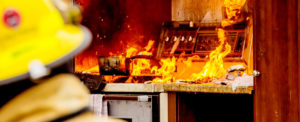The Four Different Types Of Smoke Damage And How To Restore Your Home
 Smoke damage is one of the most pervasive and destructive effects of a fire. In fact, the smoke damage from a fire is often more severe than the damage caused by the actual fire. Smoke damage can occur in many different ways. It’s important to understand these differences so you know how to deal with smoke damage if you ever have it in your home. From our fire damage restoration experts at Restoration 1 of Winston-Salem, here are four of the main types of smoke damage.
Smoke damage is one of the most pervasive and destructive effects of a fire. In fact, the smoke damage from a fire is often more severe than the damage caused by the actual fire. Smoke damage can occur in many different ways. It’s important to understand these differences so you know how to deal with smoke damage if you ever have it in your home. From our fire damage restoration experts at Restoration 1 of Winston-Salem, here are four of the main types of smoke damage.
Smoke Damage Restoration In Winston-Salem
Dry Smoke
Dry smoke is what we typically think about when it comes to smoke damage. Although, in reality it is just one of the many ways that smoke can damage a home. Nonetheless, dry smoke is created by the fast-burning, high-temperature parts of a fire that are fueled by wood and paper. It leaves a powdery texture behind which is conveniently easier to wipe up than soot or other residue. The problem with dry smoke is that it will make its way into cracks or porous materials. Thus, even a surface that appears clean will still retain a smoky odor due to the smoke that is still trapped inside it.
Wet Smoke
Wet smoke has significantly different effects than dry smoke. First of all, wet smoke is the result of low-heat, smoldering fires unlike dry smoke. Burning plastic and rubber are a good example of what produces wet smoke. Wet smoke blazes are particularly smelly and leave behind a sticky, dense residue. Cleaning it is also a chore. Normal cleaning methods just smear it around causing an even bigger mess than before. Special equipment owned by a fire damage restoration company is your best bet for dealing with a wet smoke mess.
Protein Residue
Protein residue is created when organic material evaporates during a low-heat fire. This is common when a cooking mishap causes a blaze in the kitchen. This type of smoke damage is essentially invisible with no noticeable soot or streaking, but it can permanently discolor painted, varnished, or other finished surfaces. An untrained eye often underestimates the restoration needs of protein residue damage because it’s difficult to spot, but it’s not hard to smell: the intense unpleasant odor can permeate your entire home or business if left untreated.
Oil/Fuel Residue
First and foremost, this type of damage is rare since most homes don’t have a large supply of petroleum products around. Nonetheless, if there does happen to be a large supply of petroleum that gets caught in a fire, the result will be an extremely sticky residue that is very hard to clean and exudes a foul odor.
Don’t let smoke damage become a permanent feature of your home! Give us a call at Restoration 1 of Winston-Salem immediately if your home is ever damaged by a fire and we will be right out to help you repair the damage and get back on your feet.
